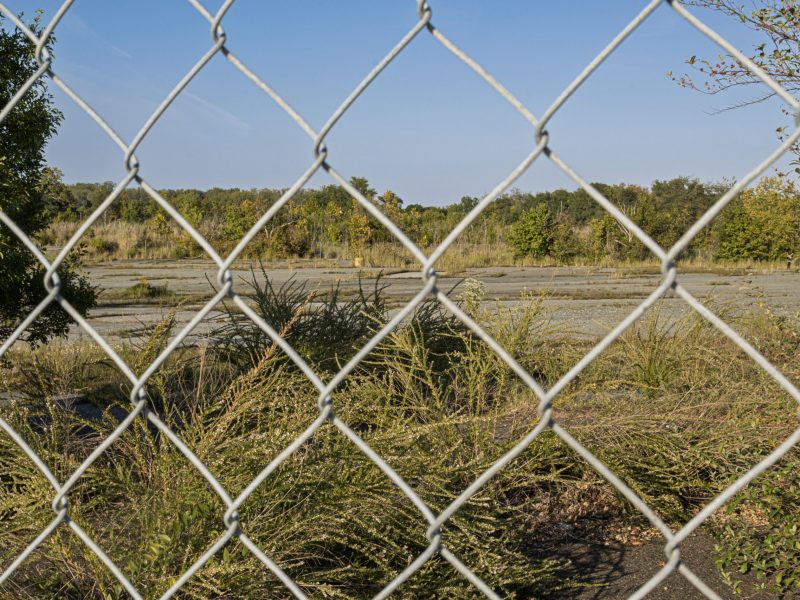University of Maryland environmental engineers were awarded a $1.4 million grant to design a sustainable stormwater treatment system that will help to remove and destroy soil contaminants.
The three-year project is funded by the Strategic Environmental Research and Development Program, which is the Defense Department’s environmental science and technology program. The treatment system will be created using data from three Defense Department sites, but the engineers hope the system design will be used throughout the country.
The three sites are military bases in Mechanicsburg, Pennsylvania, and Washington, D.C., and also the Joint Base Lewis-McChord near Tacoma, Washington.
Birthe Kjellerup, an assistant professor in the civil and environmental engineering department, said the main goal of this project is to design a system to trap contaminants before the stormwater runoff leaves the Defense Department sites. The contaminants include PCBs — which are man-made industrial products or chemicals — and copper.
[Read more: A UMD team wants to clean up a campus pond as part of a nationwide contest]
It is one of the first efforts by the development program to remove harmful chemicals before the runoff leaves the sites, which will make the system more environmentally friendly.
“As an environmental microbiologist, my favorite part of this project is working with bacteria that can degrade contaminants that we are trapping in the system,” Kjellerup said. “That means we are not only trapping them, but completely making them go away.”
While there are no solid specifics yet with the design, Allen Davis, a professor in the civil and environmental engineering department, said the design could encompass a type of rain garden or filter to capture the chemicals. After that design is complete, the next goal is to find a way to get rid of the toxins by either biodegrading them or converting them to a non-toxic material.
As of now, researchers don’t know how the contaminants associate over time with particles that aren’t stormwater, such as soil, but Kjellerup said this project will change that. The researchers want to establish the exact chemistry of how they react so they can come up with a solution that gets rid of the chemicals once and for all.
“From a university perspective, getting this grant demonstrates the continuing growth and scale and scope of the environmental research program and is a big win for both the department and university,” said Charles Schwartz, civil and environmental engineering department chair and professor.
[Read more: A nonprofit ranked UMD the second-most sustainable Big Ten school]
The first phase of this project is to gather existing data on the contaminants in stormwater and collect samples to gather knowledge on how the contaminants bury into soil over time with stormwater. One of the sample training areas is on this university’s campus in a ditch across from Xfinity Center.
The next phase is to figure out the difference in design that has to occur due to one of the sites being on the West Coast, while the other two are on the East Coast. The West Coast has longer, but less intense storms, Kjellerup said, whereas the East Coast has short, intense storms. This means the design for the stormwater system has to be flexible to accommodate both types of precipitation.
A postdoctoral scholar will also work on this project, along with two paid summer undergraduate interns per year, one from this university and one from Morgan State University.
There are also collaborators from the University of Washington Tacoma, Morgan State University, the U.S. Army Corps of Engineers and environmental consulting company Biohabitats, which has implemented large-scale treatment systems across the country.
The University of Washington Tacoma will collect samples from the site in Washington state, for example. Meanwhile, Biohabitats will consult with researchers on how best to implement a treatment system.
Biohabitats ecological engineer Christopher Streb said he is excited about the collaboration between practitioners in the field and researchers in academic settings.
“There is a real need for academia to have a sense of what practitioners are doing and be able to translate their research into useful guidance for practitioners, but on the other hand there is a need for practitioners to get appropriate guidance from those who have researched what the latest best approach is,” said Streb, who graduated from this university with a masters degree in 2001. “This collaboration will accomplish that.”
Streb added that he hopes the partnership will result in future collaborations between Biohabitats and this university.
“[The] University of Maryland is a sustainable campus and this is definitely a sustainable solution,” Kjellerup said. “It’s not just another one of those solutions that make another problem, it is aimed at solving several problems at the same time, and we are excited to get started.”



